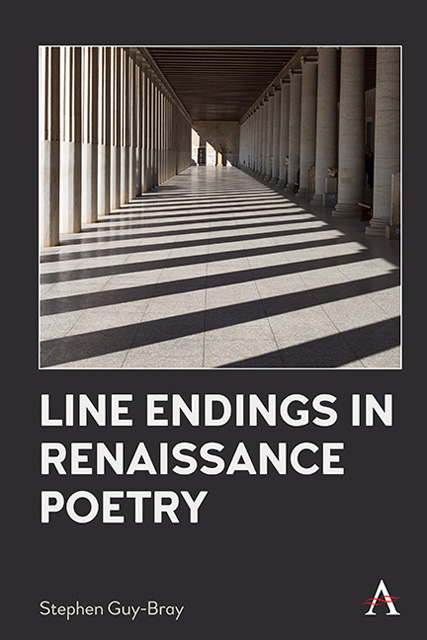Chapter 3 - Enjambment
Published online by Cambridge University Press: 10 January 2023
Summary
One of the most interesting discussions of enjambment is Eve Kosofsky Sedgwick’s “A Poem is Being Written” from Tendencies. Writing of what she appealingly calls “the heroics of enjambment,” Sedgwick tells us that as a child she “visualized enjambment very clearly as not only … the poetic gesture of straddling lines together syntactically, but also a pushing apart of lines.” Critics pointing to instances of enjambment in the poems they’re discussing tend to focus either on the straddling together or the pushing apart; in what follows, I’ll try to keep both in mind. Paradoxically, if perhaps unsurprisingly, in running over the end of the line, enjambments draw attention to the very line endings they seem to disregard: they are simultaneously a breach and an observance, as Hamlet might say. An enjambment typically gives us a complete phrase, providing, for example, the noun modified by the adjective at the end of the line, but in so doing, it also acknowledges the power of the line as the basic unit of poetry. As Dominick Knowles and Mathilda Cullen put it in their recent collection: “enjambment scratches the line’s itch to / end – without ending –.” I pointed out in the introduction that a poem is a visual object, recognizable as verse by the blank spaces to the right of the printed words. Enjambment does not disturb this picture. Enjambments often change the nature of our experience of reading a poem, but they only exist because of the line. As Knowles and Cullen suggest, an enjambment is at once an ending and not an ending.
I wrote in the introduction that at each line ending, the poem renegotiates its relation to the world. This renegotiation is most perceptible with enjambment. An end-stopped line leads to something new, although of course this newness is qualified by our knowledge of how poetry operates and, often, by the fact that we know the line will rhyme with an earlier rhyme or, in the case of a sestina, will copy an earlier teleuton. With an enjambed line, we know something—the line to come will supply the direct or indirect object of a verb, for example—but not everything.
- Type
- Chapter
- Information
- Line Endings in Renaissance Poetry , pp. 37 - 58Publisher: Anthem PressPrint publication year: 2022

